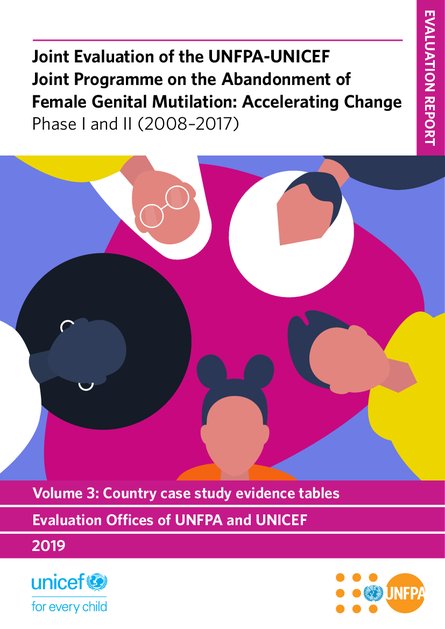
The purpose of the evaluation is to assess the extent to which, and under what circumstances, the UNFPA-UNICEF Joint Programme on the Abandonment of Female Genital Mutilation (FGM) has contributed to accelerating the abandonment of FGM over the last ten years. The evaluation also provides recommendations on how to accelerate change to end FGM.
The Joint Programme was initiated in 2008 following a UNFPA-organized global consultation, which concluded that the abandonment of FGM was urgent and that commitment and action were needed. The Joint Programme has expanded to cover 17 countries: 16 of which are in Africa, and Yemen. It is based upon a pooled funding system, with a budget of United States dollars (USD) 109 million over ten years.
The evaluation is a theory-based evaluation, drawing on the Joint Programme intervention logic, as represented in the evolving Joint Programme results frameworks. The guiding framework used for the evaluation is an evaluation matrix, consisting of evaluation questions and assumptions. The evaluation used a mixed methods design, comprising case studies, virtual case studies, a desk review and an e-survey. A systems-based approach was used to map the key categories of stakeholders, disaggregated by human-rights roles and gender where possible. Analysis was carried out using a range of techniques, including content analysis, comparative analysis, qualitative analysis and quantitative techniques, such as financial and trend analyses. The contribution of the programme to observed results was explored using qualitative comparative analysis and contribution analysis.